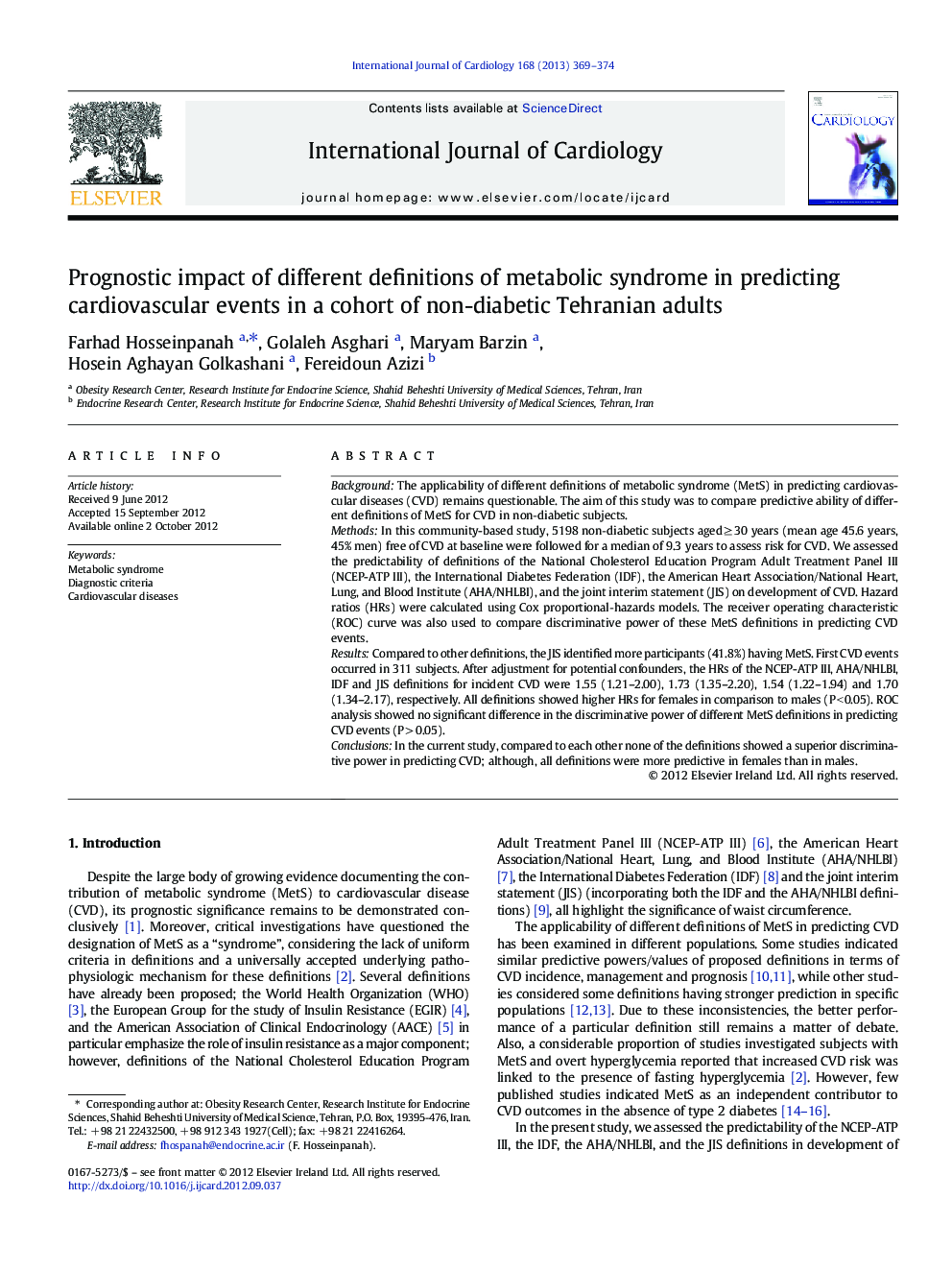| Article ID | Journal | Published Year | Pages | File Type |
|---|---|---|---|---|
| 5976690 | International Journal of Cardiology | 2013 | 6 Pages |
BackgroundThe applicability of different definitions of metabolic syndrome (MetS) in predicting cardiovascular diseases (CVD) remains questionable. The aim of this study was to compare predictive ability of different definitions of MetS for CVD in nonâdiabetic subjects.MethodsIn this community-based study, 5198 nonâdiabetic subjects aged â¥Â 30 years (mean age 45.6 years, 45% men) free of CVD at baseline were followed for a median of 9.3 years to assess risk for CVD. We assessed the predictability of definitions of the National Cholesterol Education Program Adult Treatment Panel III (NCEP-ATP III), the International Diabetes Federation (IDF), the American Heart Association/National Heart, Lung, and Blood Institute (AHA/NHLBI), and the joint interim statement (JIS) on development of CVD. Hazard ratios (HRs) were calculated using Cox proportionalâhazards models. The receiver operating characteristic (ROC) curve was also used to compare discriminative power of these MetS definitions in predicting CVD events.ResultsCompared to other definitions, the JIS identified more participants (41.8%) having MetS. First CVD events occurred in 311 subjects. After adjustment for potential confounders, the HRs of the NCEP-ATP III, AHA/NHLBI, IDF and JIS definitions for incident CVD were 1.55 (1.21-2.00), 1.73 (1.35-2.20), 1.54 (1.22-1.94) and 1.70 (1.34-2.17), respectively. All definitions showed higher HRs for females in comparison to males (P < 0.05). ROC analysis showed no significant difference in the discriminative power of different MetS definitions in predicting CVD events (P > 0.05).ConclusionsIn the current study, compared to each other none of the definitions showed a superior discriminative power in predicting CVD; although, all definitions were more predictive in females than in males.
